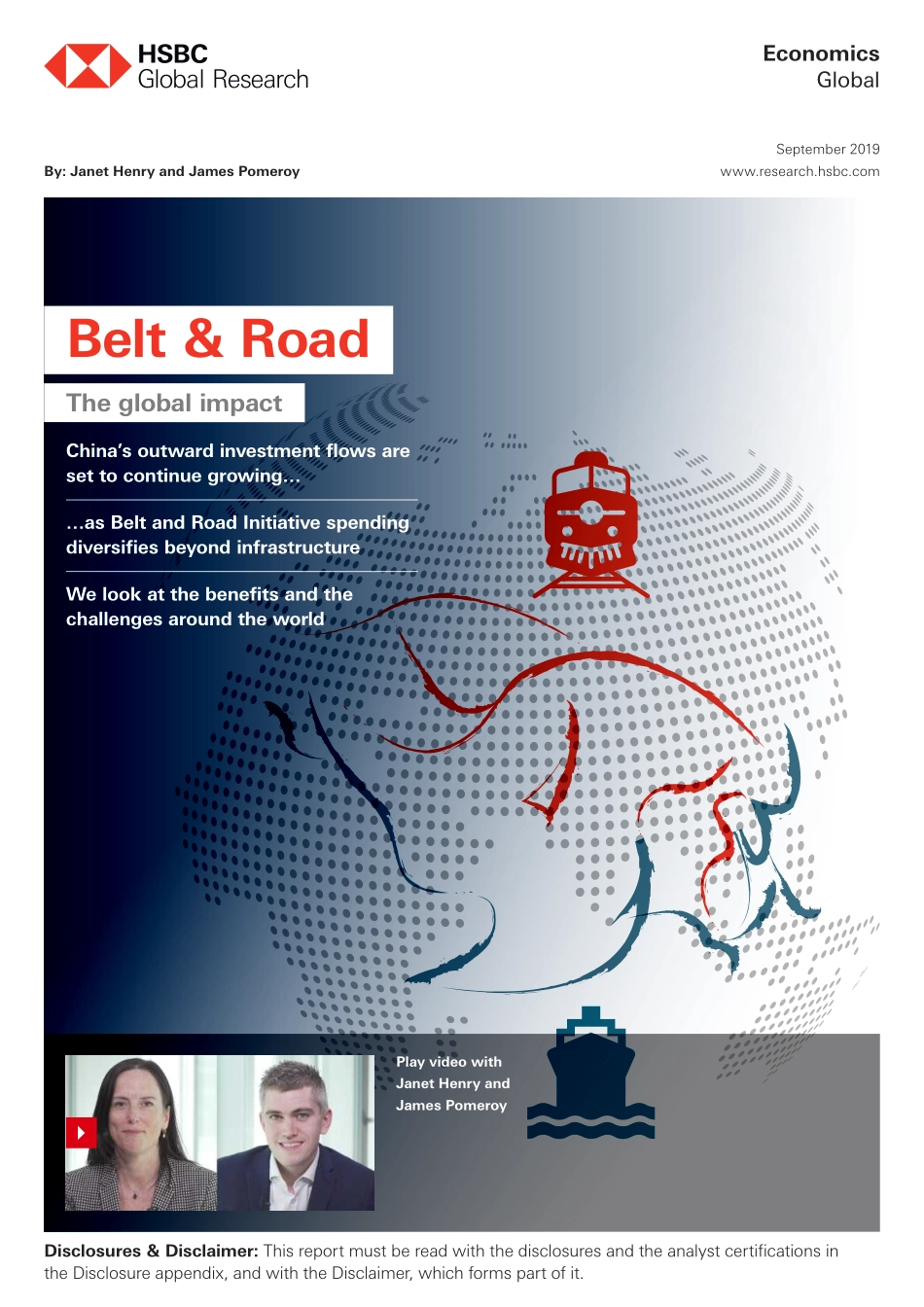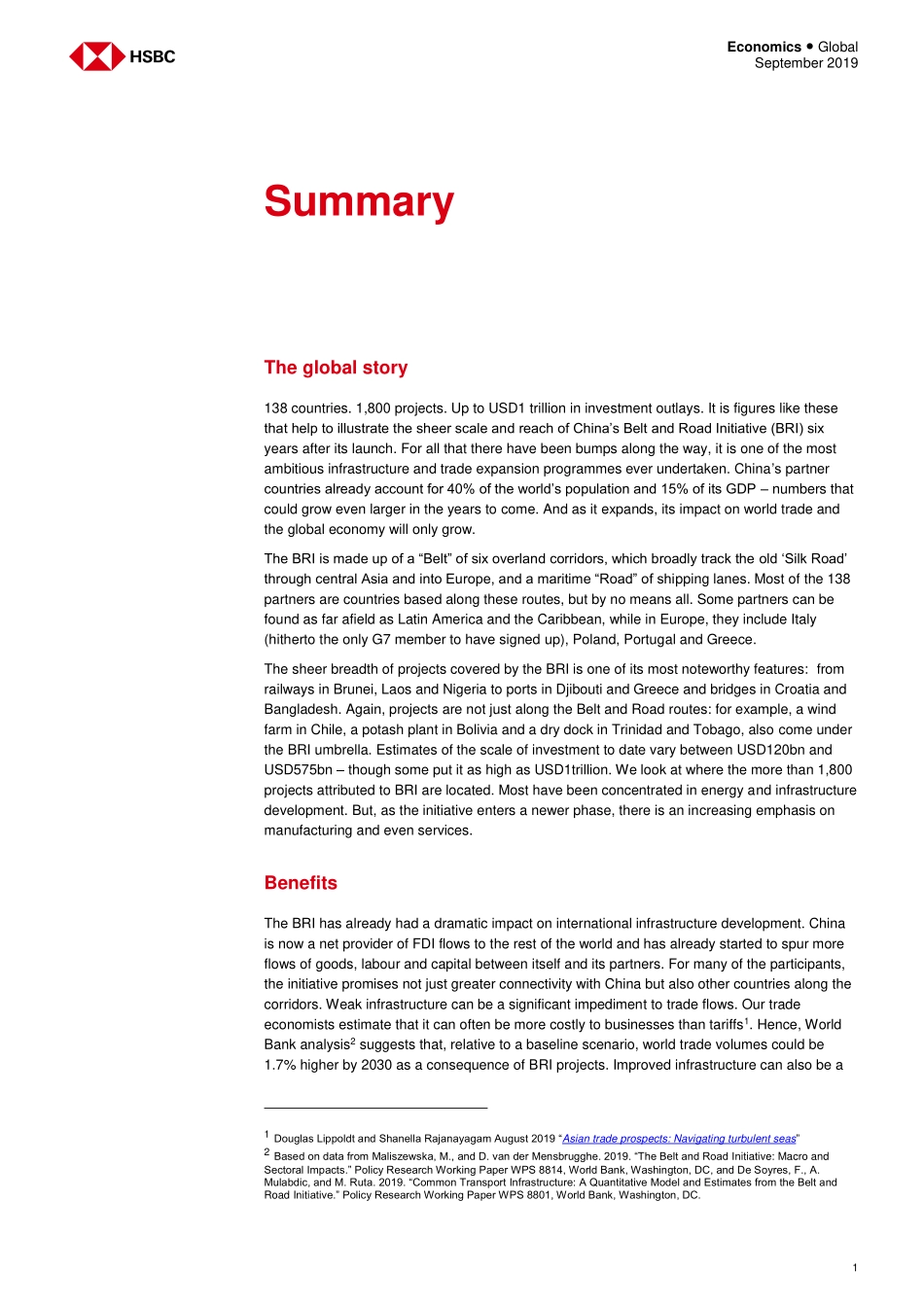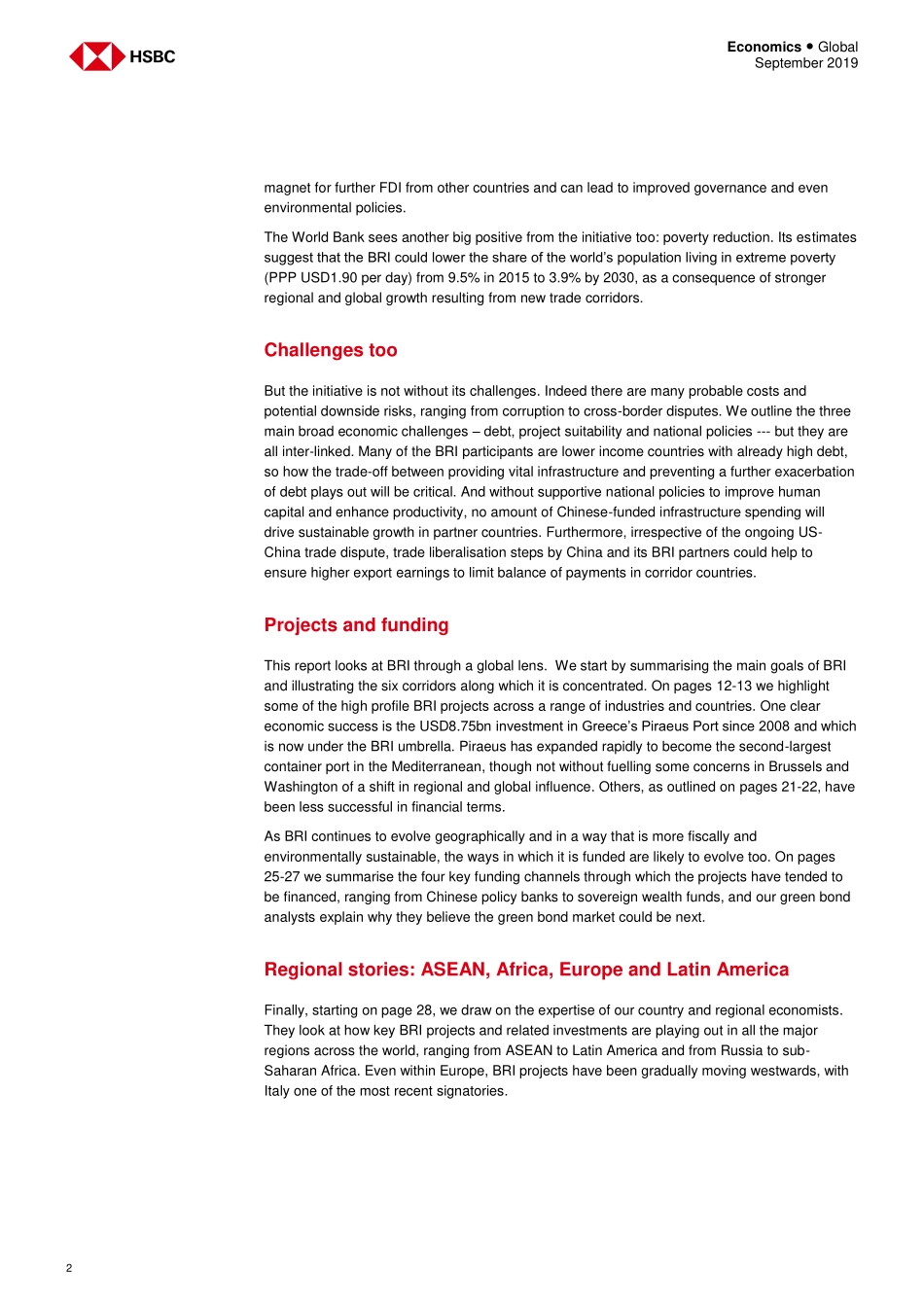www.research.hsbc.comDisclosures & Disclaimer: This report must be read with the disclosures and the analyst certifications inthe Disclosure appendix, and with the Disclaimer, which forms part of it.Play video withJanet Henry and James PomeroyEconomicsGlobalSeptember 2019By: Janet Henry and James PomeroyBelt & RoadThe global impactChina’s outward investment flows are set to continue growing……as Belt and Road Initiative spending diversifies beyond infrastructureWe look at the benefits and the challenges around the world 1 Economics ● Global September 2019 The global story 138 countries. 1,800 projects. Up to USD1 trillion in investment outlays. It is figures like these that help to illustrate the sheer scale and reach of China’s Belt and Road Initiative (BRI) six years after its launch. For all that there have been bumps along the way, it is one of the most ambitious infrastructure and trade expansion programmes ever undertaken. China’s partner countries already account for 40% of the world’s population and 15% of its GDP – numbers that could grow even larger in the years to come. And as it expands, its impact on world trade and the global economy will only grow. The BRI is made up of a “Belt” of six overland corridors, which broadly track the old ‘Silk Road’ through central Asia and into Europe, and a maritime “Road” of shipping lanes. Most of the 138 partners are countries based along these routes, but by no means all. Some partners can be found as far afield as Latin America and the Caribbean, while in Europe, they include Italy (hitherto the only G7 member to have signed up), Poland, Portugal and Greece. The sheer breadth of projects covered by the BRI is one of its most noteworthy features: from railways in Brunei, Laos and Nigeria to ports in Djibouti and Greece and bridges in Croatia and Bangladesh. Again, projects are not just along the Belt and Road routes: for example, a wind farm in Chile, a potash plant in Bolivia and a dry dock in Trinidad and Tobago, also come under the BRI umbrella. Estimates of the scale of investment to date vary between USD120bn and USD575bn – though some put it as high as USD1trillion. We look at where the more than 1,800 projects attributed to BRI are located. Most have been concentrated in energy and infrastructure development. But, as the initiative enters a newer phase, there is an increasing emphasis on manufacturing and even services. Benefits The BRI has already had a dramatic impact on international infrastructure development. China is now a net provider of FDI flows to the rest of the world and has already started to spur more flows of goods, labour and capital between itself and its partners. For many of the participants, the initiative promises not just greater connectivity with China but also other countries along the corridors. Weak infrastructure c...


